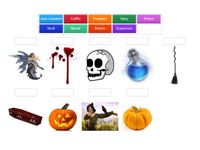How to pronounce the final -ed in regular verbs.
3 Possible ways: /id/, /t/ or /d/
1. The /id/ sound
If the last letter of the word is spelled with D or T, the ED is pronounced as a separate syllable with an /id/ .
- wanted (sounds like "want-id")
- waited
- needed
- fold
2. The /t/ sound
If the last consonant of the word is voiceless (xorda), then the ED is pronounced as a T. Like in “p”, “k”, “f”, “th”, “s”, “sh” and “ch”
- kissed (the S sound comes from the front of mouth so it would sound like "kisst")
- parked
- helped
- talked (sounds like "talkt")
NOTE: As an example, with the word "helped", if you say "help-id" as a two syllable word, then it is very likely that people will NOT understand the word or what you are saying. (It is pronounced like "helpt")
3. The /d/ sound
If the last letter of the words ends in a voiced (sonora) consonant b, g, v, z, m, n, ŋ, l, r, s, w, y, z,and vowel sounds, then the ED is pronounced like a D
- played (sounds like "playd")
- closed (the S sounds like a vibrating Z so the word would sound like "clozd")
- opened
- lived
An easy way to remember how to pronounce ED words
The most important thing to remember is that there are two main divisions:
- The words that end in T or D
- the ED is pronounced as a syllable /id/ - and the REST of the words
- you can pronounce the ED as /t/ and people will understand.
In time you will learn when to pronounce the ED as /t/ or /d/.

Another video explaining the different ways -ed is pronounced in English. He speaks far too slow for me but it can work for you.


No hay comentarios:
Publicar un comentario
Nota: solo los miembros de este blog pueden publicar comentarios.